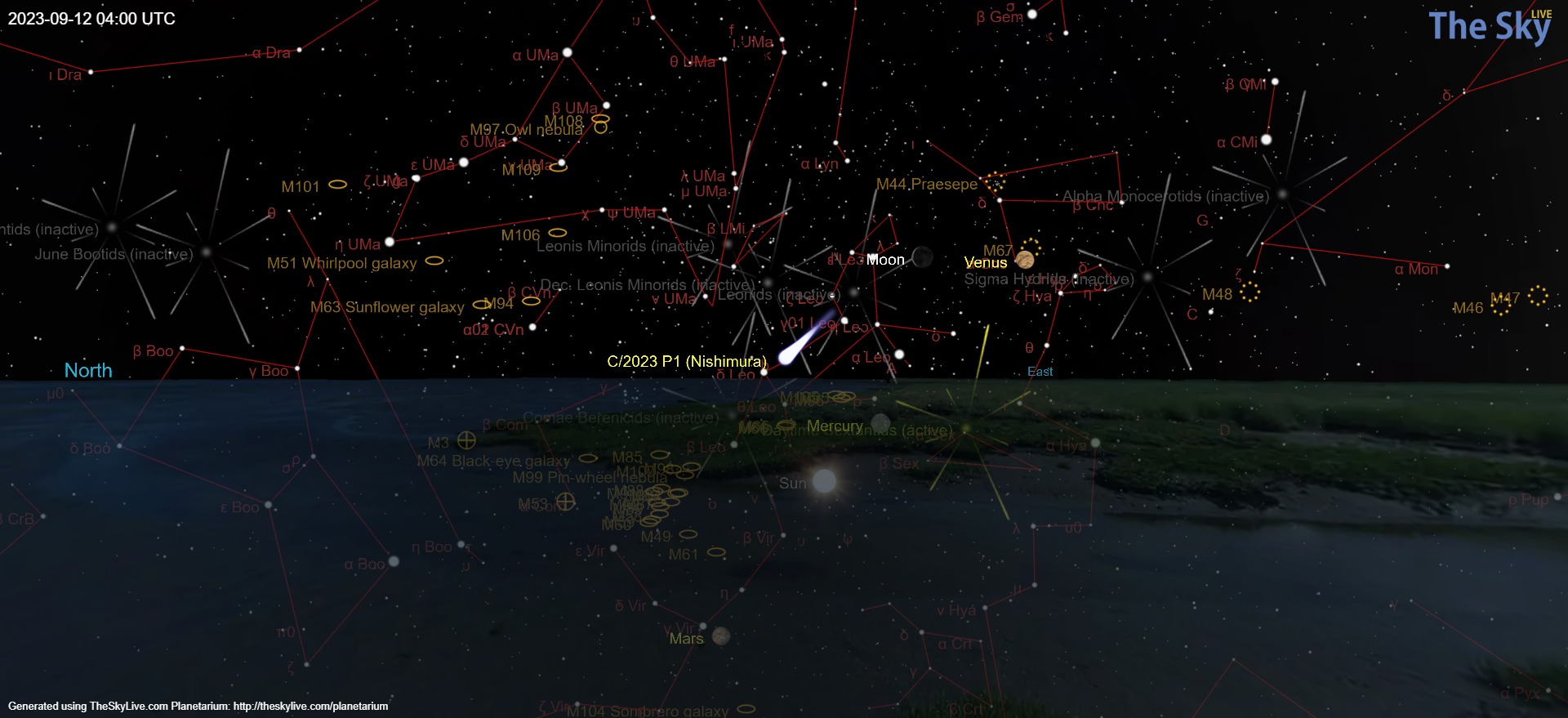Tomorrow’s the day if you want to have the best possible chance of gazing upon the green spectacle of Comet Nishimura. You’ll need to be prepared for an early start, but this comet takes 437 years to do a lap of the Solar System, so we really are talking about a once in a lifetime opportunity.
Early on September 12, 2023, Comet Nishimura – or, to give it its full designation, Comet C/2023 P1 (Nishimura) – will pass Earth at a distance of 125.4 million kilometers (77.9 million miles). That’s close enough that it should even be visible to the naked eye, so a lack of equipment need not be a barrier if you fancy doing some stargazing.
The comet has actually been visible to keen-eyed observers for a few weeks now, having first been spotted on August 11 by amateur astronomer Hideo Nishimura. Nishimura, for whom the comet has been named, has quite the track record himself, having previously discovered two other comets, designated C/1994 N1 (Nakamura-Nishimura-Machholz) and C/2021 O1 (Nishimura).
Images captured of the comet by talented astrophotographers show its distinctive vibrant green color and long thin tail.
Comet Nishimura’s centuries-long voyage through the skies will climax on September 17 as it reaches its perihelion, the closest point to the Sun. At that point, it will be much more difficult to observe, so if the skies are clear tomorrow morning you might want to seize your chance.
For UK viewers, the best time to see the comet is likely to be just before dawn on Tuesday, between 4 am and 6 am. Although it may well be visible to the naked eye, a pair of small binoculars will help you get the best possible view.

The position of the comet in the sky over Europe at 5 am on September 12.
Nishimura is not the only green comet that makes irregular visits to our planet. Earlier this year, C/2022 E3 (ZTF) made its closest pass to Earth in 50,000 years, making for some more stunning photo-ops.
Comet Nishimura won’t be seen in our skies again until 2431, which is further in the future than even many sci-fi franchises dare to go. Given its rarity, then, it might just be worth getting up a couple of hours early tomorrow, to try to catch a glimpse of this celestial spectacle for yourself.
Source Link: If You Want To Spot Comet Nishimura, Tomorrow Could Be Your Best Chance